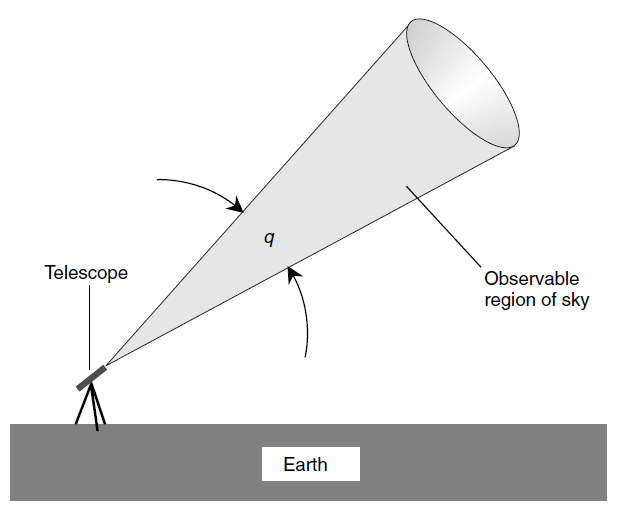
تاريخ الفيزياء

علماء الفيزياء


الفيزياء الكلاسيكية

الميكانيك

الديناميكا الحرارية


الكهربائية والمغناطيسية

الكهربائية

المغناطيسية

الكهرومغناطيسية


علم البصريات

تاريخ علم البصريات

الضوء

مواضيع عامة في علم البصريات

الصوت


الفيزياء الحديثة


النظرية النسبية

النظرية النسبية الخاصة

النظرية النسبية العامة

مواضيع عامة في النظرية النسبية

ميكانيكا الكم

الفيزياء الذرية

الفيزياء الجزيئية


الفيزياء النووية

مواضيع عامة في الفيزياء النووية

النشاط الاشعاعي


فيزياء الحالة الصلبة

الموصلات

أشباه الموصلات

العوازل

مواضيع عامة في الفيزياء الصلبة

فيزياء الجوامد


الليزر

أنواع الليزر

بعض تطبيقات الليزر

مواضيع عامة في الليزر


علم الفلك

تاريخ وعلماء علم الفلك

الثقوب السوداء


المجموعة الشمسية

الشمس

كوكب عطارد

كوكب الزهرة

كوكب الأرض

كوكب المريخ

كوكب المشتري

كوكب زحل

كوكب أورانوس

كوكب نبتون

كوكب بلوتو

القمر

كواكب ومواضيع اخرى

مواضيع عامة في علم الفلك

النجوم

البلازما

الألكترونيات

خواص المادة


الطاقة البديلة

الطاقة الشمسية

مواضيع عامة في الطاقة البديلة

المد والجزر

فيزياء الجسيمات


الفيزياء والعلوم الأخرى

الفيزياء الكيميائية

الفيزياء الرياضية

الفيزياء الحيوية

الفيزياء العامة


مواضيع عامة في الفيزياء

تجارب فيزيائية

مصطلحات وتعاريف فيزيائية

وحدات القياس الفيزيائية

طرائف الفيزياء

مواضيع اخرى
ABSOLUTE FIELD OF VIEW
المؤلف:
S. Gibilisco
المصدر:
Physics Demystified
الجزء والصفحة:
518
10-11-2020
1790
ABSOLUTE FIELD OF VIEW
When you look through the eyepiece of a telescope, you see a circular patch of sky. Actually, you can see anything within a cone-shaped region whose apex is at the telescope (Fig. 1). The absolute field of view is the angular diameter q of this cone; q can be specified in degrees, minutes, and/or seconds of arc. Sometimes the angular radius is specified instead of the angular diameter.
The absolute field of view depends on several factors. The magnification of the telescope is important. When all other factors are held constant, the absolute field of view is inversely proportional to the magnification. If you double the magnification, you cut the field in half; if you reduce the magnification to one-quarter of its previous value, you increase the field by a factor of 4.
The viewing angle—that is, the apparent field of view—provided by the eyepiece is important. Some types of eyepieces have a wide field, such as 60° or even 90°. Others have narrower apparent fields, in some cases less than 30°.
Another factor that affects the absolute field of view is the ratio of the objective diameter to its focal length. In general, the larger this ratio, the wider is the maximum absolute field of view that can be obtained with the telescope. Long, narrow telescopes have the smallest maximum absolute fields of view; short, fat ones have the widest maximum fields.

Fig. 1. A telescope’s absolute field of view q is measured in angular degrees, minutes, and/or seconds of arc.
 الاكثر قراءة في مواضيع عامة في علم البصريات
الاكثر قراءة في مواضيع عامة في علم البصريات
 اخر الاخبار
اخر الاخبار
اخبار العتبة العباسية المقدسة

الآخبار الصحية















 "المهمة".. إصدار قصصي يوثّق القصص الفائزة في مسابقة فتوى الدفاع المقدسة للقصة القصيرة
"المهمة".. إصدار قصصي يوثّق القصص الفائزة في مسابقة فتوى الدفاع المقدسة للقصة القصيرة (نوافذ).. إصدار أدبي يوثق القصص الفائزة في مسابقة الإمام العسكري (عليه السلام)
(نوافذ).. إصدار أدبي يوثق القصص الفائزة في مسابقة الإمام العسكري (عليه السلام) قسم الشؤون الفكرية يصدر مجموعة قصصية بعنوان (قلوب بلا مأوى)
قسم الشؤون الفكرية يصدر مجموعة قصصية بعنوان (قلوب بلا مأوى)


















